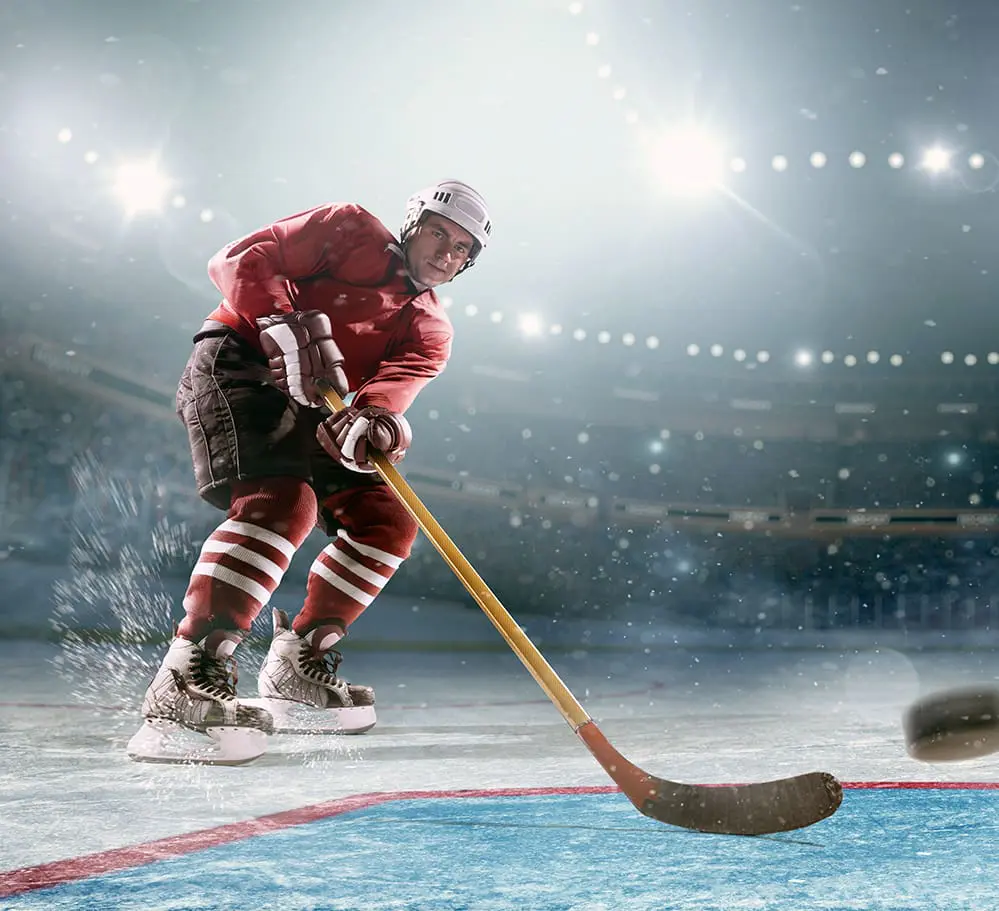Get Off The Bench and Back On The Ice With Laser Therapy
Guest Blog by Dr. Perry Nickelston DC, NKT, FMS, SFMA
Hockey players take some hard knocks – and not just the “face-smashing against Plexiglas” ones you see on YouTube. Heavy-duty pads can help protect against some bumps and bruises resulting from hard hits, but impact injuries still take their toll. There are also the less dramatic (but equally as crippling) overuse injuries like sprains and strains caused by repetitive motion and intense training.
With so many demands on their bodies, tough players need powerful modalities to help keep them off the bench and in the rink – which is why numerous professional hockey teams rely on class IV laser therapy. By reducing pain and inflammation quickly and effectively, laser therapy has become a go-to modality for many professionals, both on and off the ice.

Here are 3 common hockey-related injuries that respond particularly well to laser therapy:
Groin Pain and Adductor Strains
Proximal adductor strains and groin pain injuries are common in hockey. These types of injuries can be difficult to recover from because of their involvement in controlling the skates on ice. The pectineus and adductor (longus, brevis, and magnus) are often the culprits, as they play a synergistic patterning role in hip flexion and extension.
Application of laser therapy with an open cone attachment to the pectineus and adductor complex can help reduce inflammation and pain in these areas. Total dosage may range from 3,000 to 6,000 joules depending on the size of the area being treated. Generally your target dosage should be about 10 J/cm2. Depending on the laser model being used, the clinician can treat with anywhere between 10-25 watts of power, with the length of treatments being dependent on the power used. Typically, 6-10 sessions should be scheduled, followed by reassessment.
Knee Sprains
Medial and lateral knee sprains frequently occur in hockey players as a result of both microtrauma and the direct trauma of impact. Often, lack of mobility in the hip and ankle contribute to excessive motion in the knee joint, while fascial snags in the soft tissue of the knee will alter elastic force transmission from ankle to the hip, leaving the player at greater risk of injury. Referred pain to the knee from trigger points in the thigh can also lead to discomfort and reduced mobility.
Ligament injuries caused by such trauma respond well to a combination of laser therapy and corrective exercise, and laser therapy can be applied during, before, or after the course of corrective exercises to reduce any related pain or swelling. For this type of injury, an open cone attachment can be used to deliver laser therapy to the medial and lateral knee (1,000 J per side), while a massage ball attachment works well on the upper thigh to cover the rectus femoris, hamstrings, adductors and vastus lateralis. For additional treatment coverage, the massage ball can also be used on the gastrocnemius, posterior tibialis and posterior knee. The target dose for these areas should be 8-10 J/cm2, and a power setting of 8-10 W is ideal to keep the treatment times short. Depending on the extent of injury, it may require anywhere between 4-10 sessions.
Shoulder Injuries
Direct impact shoulder injuries causing impingement and joint compression are another common injury in hockey. Bursitis and inflammation of the surrounding tissues can restrict range of motion, making it difficult to control the hockey stick and puck with the expected level of precision. Decreased motion over time may progress to osteoarthritis of the shoulder joint, so it’s important to assess the shoulder blade and latissimus muscle in all shoulder joint mechanics.
To effectively reduce such shoulder pain and inflammation, use a massage ball attachment to deliver a laser therapy treatment to the shoulder joint, paying special attention to the posterior capsular region, as well as the pectoralis minor and rotator cuff muscles. Continue treating into the latissimus dorsi muscle and down to the thoracolumbar fascia. Additionally, laser on the fascia of the posterior oblique sling attachments will have a noted positive impact on the shoulder range of motion. For a shoulder of average size, a dosage of 10-12 J/cm2 should be delivered at a power setting of 8-10 W, for a total of 3,000-5,000 J.
Put Laser Therapy on Your Treatment Roster
While injuries can’t be prevented, the downtime and damage they cause can be lessened with proper assessment and treatment. So, it is important to have the right tools available when injury happens. Help put pain and inflammation in the penalty box this hockey season with laser therapy!

Comments